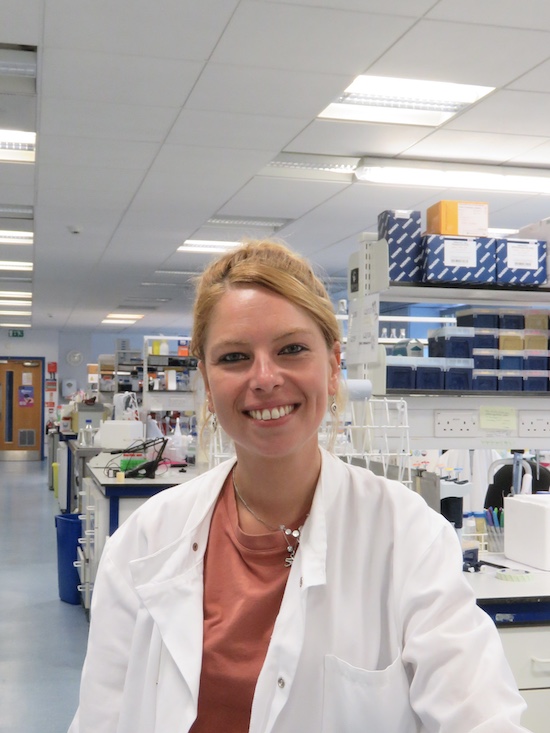Dr. Ester Serrano
Postdoctoral Researcher
Roe Group Member: September 2021 – Present
I studied for a BSc in Biology and MSc in Microbiology at the Universidad Autónoma de Madrid (UAM) (Spain). In 2018, I defended my PhD thesis at the National Centre for Biotechnology (CNB) (Madrid, Spain) obtaining the title of Doctor in Molecular Biosciences by UAM. Then, I continued for one year in the same laboratory as Postdoctoral Researcher. In 2019, I moved to Glasgow to work as Research Assistant in the Institute of Infection, Immunity, and Inflammation at the University of Glasgow (UofG). I have dedicated most of my scientific career (2010-2021) to the study of all the horizontal gene transfer (HGT) mechanisms (conjugation, natural transformation, and transduction) that bacteria use to exchange genetic information and, therefore, to spread not only antibiotic resistance genes, but also virulence genes and metabolic pathways.
In 2021, I joined the Roe group starting my current position as Research Associate. In my current project I am still in the fight against antibiotic-resistant bacteria, but I am using a different approach compared with that taken in previous years. Instead of studying the molecular basis for the spread of antibiotic-resistant genes by HGT, now I am developing alternative strategies to the use of antibiotics. My current project funded by the BBSRC aims to treat bacterial infections, that are either resistant or unable to be treated with classical antibiotics. In the case of the model organism that is the subject of my current project, Enterohemorrhagic Escherichia coli (EHEC), antibiotics activate the SOS response and consequently the bacteria produce Shiga toxin, which increases the severity of the disease. Thus, for EHEC antibiotic treatment is contraindicated.
In my current project, I am studying a bacterial protein called AdhE. AdhE is a bidirectional enzyme that catalyses the conversion of acetyl-CoA to ethanol. AdhE is important because when it is deleted from EHEC it causes an attenuation of virulence and a reduction in expression of the major system used to attach to host cells, the type 3 secretion system. Unusually, AdhE oligomerises both in vivo and in vitro, forming long filaments heterogeneous in length called spirosomes. In this project my aspiration is to understand more fully how AdhE spirosomes work. This basic knowledge will help us to translate our work to develop specific inhibitors that might function against a range of Gram-negative pathogens. This has brought me into the field of biophysics, wherein I am using analytical ultracentrifugation (AUC), small angle X-ray scattering (SAXS) and cryo-EM to explore the response of AdhE spirosomes to potential anti-virulence candidates.
Publications
Connolly, J.P., Turner, N.C., Serrano, E., Rimbi, P.T., Browning, D.F., O’Boyle, N. and Roe, A.J. (2022) 'Control of resistance against bacteriophage killing by a metabolic regulator in meningitis-associated Escherichia coli', Proceedings of the National Academy of Sciences, 119(45), e2210299119, available: http://dx.doi.org/10.1073/pnas.2210299119.
Serrano, E. (2022) 'A New Twist on Drug Design: AdhE Spirosomes as Cross Species Anti Virulence Targets', in 25th International Analytical Ultracentrifugation Workshop and Symposium (AUC 2022), Lethbridge, AB, Canada.


